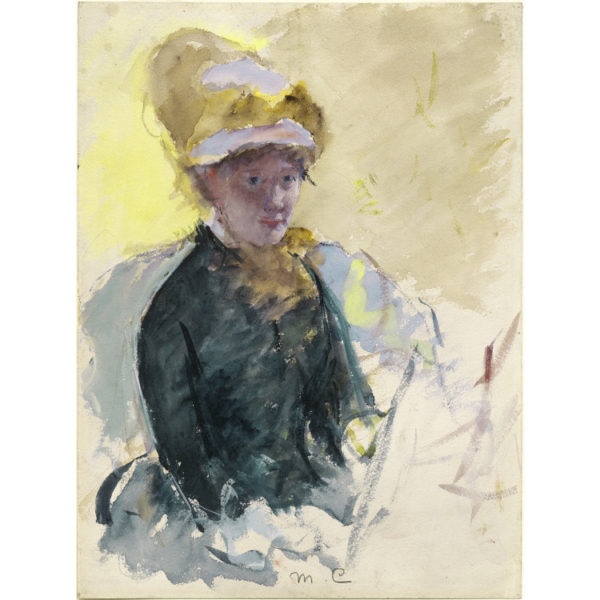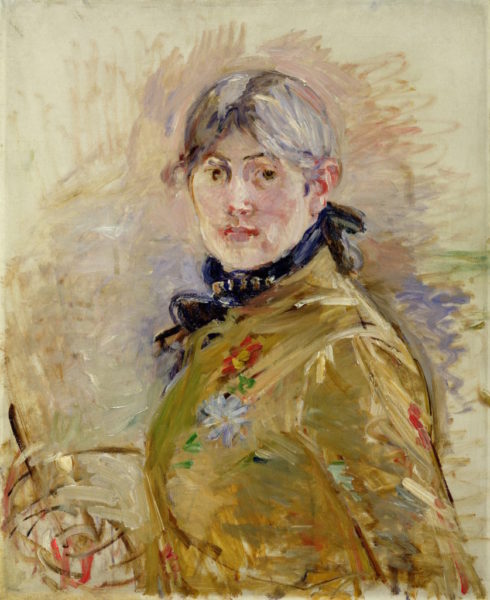For much of history, there has only been room for one woman in any given field. She has been the exception, with a second woman automatically positioned as a rival. Think of Elisabeth Vigee-Lebrun and Adelaide Labille-Guiard. Or Bette Davis and Joan Crawford. Or Serena Williams and the latest contender trying to unseat this champion.
This is the position in which Berthe Morisot found herself when Mary Cassatt joined the Impressionists. Morisot had helped found the movement, and for its first three exhibitions, she was “the woman Impressionist”. When Degas invited Cassatt to participate in the Fourth Impressionist Exhibition, in 1884. Morisot was not thrilled.
Degas, who was always including outsiders in our exhibitions, had invited an American woman to join our uniquely French movement and to take part in the next Impressionist show in April. I had painted only fanciful fans during my confinement. And while Degas planned to dedicate a whole room to the decorated fans in vogue at the time, including his own and Pissarro’s, I did not want those to be my sole contribution when the critics were sure to compare me to this American, Mary Cassatt. Degas presumed that I would participate in the upcoming Impressionist exhibition, but I had already decided that I would not. All would think that I had missed the exhibition in order to care for my infant, and I would let them believe that was my sole reason. (from La Luministe)
You might think that Morisot would be happy to have another woman in the group, someone with whom to discuss art since she was unable to join her male colleagues in the cafés. But Cassatt spoke French with a grating American accent, which made her appear crude in Morisot’s eyes, and Morisot spoke very little English at all, so Cassatt found her cold and aloof. As Cassatt’s French improved, so did her relationship with Morisot (although the Frenchwoman’s English never got any better.)
I noticed that Mary Cassatt had succeeded in engaging my husband in a tête-à-tête. Her conversational skill—which I could appreciate now that she had become more confident speaking French—and her perfect posture evinced her good breeding. (from La Luministe)
Later in their lives, the two women began to spend more time together. When the Universal Exposition of 1889 offered an exhibit of Japanese prints, Cassatt wrote to Morisot: “You must see the Japanese. Come as soon as you can.” Cassatt was obsessed with Japanese prints, and she experimented with her own in dry point and aquatint. She taught some of her techniques to Morisot.
The two artists also shared a model together when, in middle-age, they decided to learn to paint the nude. Because they were women, they’d never been permitted to attend a life-drawing class. Their results-backs and shoulders only-reveal either an excess of discretion or the insecurity of artists who had never studied anatomy.
In the end, Morisot and Cassatt were friends, not competitors. When you consider that their painting styles were quite different-Cassatt created form through line, and Morisot created form through color-is it really necessary to decide which one was the better artist? There was room for both of them in the Impressionist movement and in art history.



